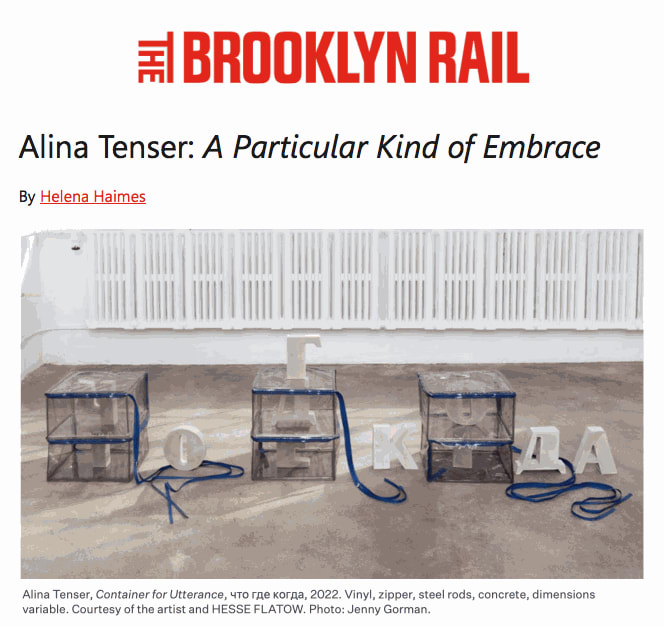Those who have learned a second language to a reasonable degree of fluency may be familiar with a disconcerting phenomenon known as “first language attrition.” Just as a learner starts to feel tantalizingly close to bilingualism, they might suddenly find themselves in what feels like a kind of communicative black hole; words and expressions you’ve used intuitively for decades suddenly disappear, and you’re left verbally stuck, without a way to express yourself in either your first or foreign tongue.
The first body of work presented in Ukrainian-born artist Alina Tenser’s current exhibition at Hesse Flatow brings this disarming experience immediately to mind. Her “Containers for Utterances” series is composed of stacked boxes made of flexible vinyl or PVC, many of them inhabited by cast concrete letterforms from the Cyrillic and Roman alphabets. These vessels are each stitched together with a single, long zipper; visual manifestations of Tenser’s attempts to compartmentalize Russian and English words and phonemes after emigrating to the US from Ukraine as a child.
These references are layered, complex, and deeply personal, though Tenser manages to achieve a difficult balance between autobiographical reflection without being exclusionary. This work beckons all of us to engage with it, rather than alienating those of us with no grasp of the challenges peculiar to the relationship between these two particular languages. While Russian speakers can obviously connect with it on a profound level, it also successfully invites everyone else to ponder broader questions of the gaps between thought, speech, and the written word. Trapped in their almost entirely hermetic containers, these odd little concrete letters will resonate with anyone who’s ever been lost for words, or fought to compartmentalize more than one language when trying to express themselves in another. Tenser revels in her own linguistic hiccups, as well as the idiosyncratic connections she formed between her first and second tongues. She manages to elevate language beyond its signifying register, and into the realm of the affective. Linguistic mistakes, stutters, and slippages are made, quite literally, concrete.


